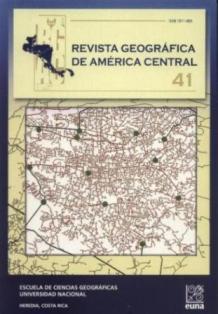EVALUACIÓN SOCIOAMBIENTAL DE UNA ZONA DE AMORTIGUAMIENTO: CASO DEL PARQUE PIEDRAS BLANCAS Y LA RESERVA DE VIDA SILVESTRE GOLFITO, COSTA RICA
Keywords:
zona de amortiguamiento, espacios protegidos, política socioambiental, Parque Nacional Piedras Blancas, conflictos socioambientales, buffer zones, conservation areas, Piedras Blancas National Park, environmental policies, conflictos socioambientaAbstract
Este artículo analiza las políticas ambientales, relacionadas directamente con el establecimiento y el manejo de los espacios protegidos, y muy especialmente, con las zonas de
amortiguamiento en Costa Rica, como un elemento esencial para comprender la dinámica en áreas de conservación reciente creación, por ejemplo el Parque Nacional Piedras Blancas y la Reserva de Vida Silvestre Golfito. Se analiza en esta área, de forma cualitativa, los procesos socioambientales, como componentes fundamentales en la determinación del nivel de alcance de la conservación de estas áreas protegidas. Finalmente, este artículo concluye la importancia de abordar la gestión de los espacios protegidos desde perspectivas sistemáticas, que permita no sólo articular diferentes áreas, sino que realice una gestión que considere tanto los aspectos socioeconómicos para la conservación como los ecológicos, debido a que las condiciones de pobreza imperantes en el área de estudio han limitado fuertemente la consolidación de estas áreas.
Abstracts:
This article analyzes the environmental policies related directly with the creation and management of protected areas, especially the buffer zones in Costa Rica, as crucial elements in
the comprehension of different dynamics in the recently created conservation areas, like the Piedras Blancas National Park and the Golfito Wildlife Refuge. There is a qualitative analysis regarding the socio-environmental processes, as key elements in determining the conservation level in these protected areas. Finally, the article details the importance of approaching the management of protected areas from systematic points of view that allow the articulation of different areas, as well as considering the basic and socioeconomic aspects of the area, due to the fact that critic poverty conditions have strongly limited the consolidation of these protected areas.
Downloads
How to Cite
Issue
Section
License
Proposed policy for journals offering Open Access
Authors publishing their works in the Journal acknowledge and agree to the following terms:
a) Authors retain the copyrights to their works and guarantee the Journal the right to be the first to publish their works, under the Creative Commons License Attribution-NonCommercial-ShareAlike 4.0 International, CC BY-NC-SA 4.0 International (https://creativecommons.org/licenses/by-nc-sa/4.0/deed.es), which allows others to share works upon complying with the acknowledgment of authorship and mention of the Journal as the original publisher of the work.
b) Authors are permitted to separately establish additional agreements for the non-exclusive distribution of the official edition of the work published in the Journal (for example, authors may desire to place the work in an institutional repository or incorporate it into a book that is to published elsewhere) so long they acknowledgment to recognize the Journal as the original publisher. The aforementioned additional agreements must respect the terms of the non-profit character and sharing philosophy of the original license (CC BY-NC-SA 4.0 International, https://creativecommons.org/licenses/by-nc-sa/4.0/deed.es).
c) Authors are encouraged to archive the post-print or editor/PDF version in Open Access repositories.






 REVGEO is licensed under https://creativecommons.org/licenses/by-nc-sa/4.0/deed.es
REVGEO is licensed under https://creativecommons.org/licenses/by-nc-sa/4.0/deed.es
.svg_4.png)

_(1).png)
_(1)_(1)_(1)_1.png)
(2)(1)(1)(1).png)
